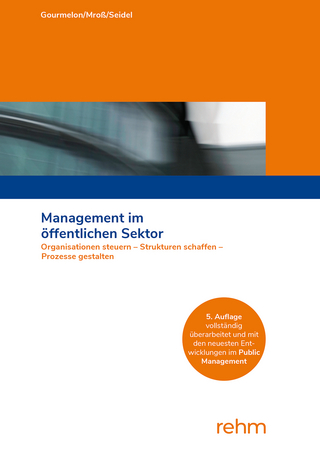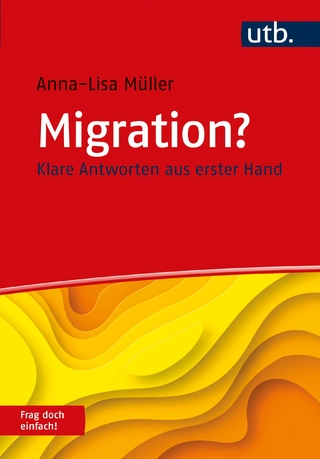
Employment-Related Securities and Unlisted Companies
Spiramus Press (Verlag)
978-1-910151-50-1 (ISBN)
Employment-Related Securities and Unlisted Companies is written with mainly private or unlisted companies in mind and explains in depth how the employment related securities ('ERS') rules in ITEPA 2003, Part 7 apply to employee share acquisitions generally, including:
Securities as earnings
Restricted or convertible securities
Securities acquired for less than market value
Securities disposed of for more than their market value
Post-acquisition benefits connected with securities
Securities acquired under options
Part 7 consists partly of anti-avoidance rules relating to shares and other securities acquired or disposed of under the above categories. The rest of the legislation is concerned mainly with the tax-advantaged securities option arrangements, though the major emphasis in this work is on the Enterprise Management Incentives ('EMI') share option scheme. EMI options are of relevance mainly to unlisted companies due to the financial and other limits applicable.
The book also explores employee share acquisitions through various means, the relevant capital gains tax rules and corporation tax relief for employee share acquisitions. Basic share valuation methodology is discussed and though PAYE and NICs do not apply generally to unlisted company shares/securities, they may apply where a market exists for the securities or on the occurrence of events related to ERS. Lastly, the compliance requirements with regard to online registration of schemes, annual returns, penalties etc, are also featured.
The vast majority of companies registered with Companies House are unlisted companies and OMB/SME owner-managers and their professional advisers need to be aware of the impact of the ERS rules and of both the pitfalls and the opportunities presented. Part 7 is complex and confusing but important legislation. The detailed commentary provided here aims to provide its target audience with as complete a guide as possible to both the technicalities and the practicalities involved in a wide variety of circumstances.
There is no other publication of its type which deals with the ERS rules in depth and, as explained, this is a subject which all company owner-managers and their advisers need to be informed about.
Ken Moody has been in tax for over 30 years and has experience over a wide range of direct tax issues. After a brief spell with HM Revenue and Customs he qualified as a Chartered Tax Adviser with a local Sheffield firm of Chartered Accountants. He subsequently joined a top 30 independent firm of Chartered Accountants in London where he managed the corporation tax affairs of a household name quoted group, before moving to a similar role with Saffery Champness. Returning to his northern roots, Ken has, for the last 15 years mainly specialised in the tax affairs of owner-managed businesses, during which time he has written numerous articles for professional journals and other published material. He has been closely associated with the ERS rules since the current legislation was introduced in 2003 and has written articles for Taxation magazine and produced other guides on the topic which he has now developed into the current work. Ken is an independent tax consultant.
Abbreviations
Table of authorities
1 Introduction to taxation of ERS and related matters
1.1 Introduction to this work
1.2 Terminology
1.3 Introduction to the legislation
1.4 ERS and taxation of earnings
1.5 History and commencement of the legislation
1.6 Finance (No.2) Act 2005 and tax avoidance
1.7 Finance Act 2006
1.8 From 2006 to the present
1.9 Taxation of ERS – review of the main provisions
1.10 HMRC guidance
1.11 Employee shareholder
1.12 The corporation tax deduction – overview
1.13 A few ideas
2 Circumstances and (some) solutions
2.1 Introduction
2.2 Four ways for employees to acquire shares
2.3 Typical scenarios
2.4 Commercial expediency
2.5 Where sale of the company is in prospect
2.6 The employee's perspective
2.7 'Exit route' considerations
2.8 A tax-inefficient exit
2.9 Managers' equity investments
2.10 The 'nil paid' share arrangement
2.11 Growth shares
2.12 Shares in subsidiary companies
2.13 Joint Share Ownership Plans
2.14 'Flowering' or 'blossoming shares'
2.15 Option arrangements
2.16 'Alphabet' shares
3 Definitions
3.1 Introduction
3.2 Scope of the legislation
3.3 Negative amounts
3.4 Meaning of securities
3.5 Definition of market value
3.6 Consideration
3.7 What shares are employment-related?
3.8 Bonus issues & replacement securities
3.9 Rights issues
3.10 Associated persons
3.11 Exclusions: public offers
3.12 Exclusions: residence
3.13 Employee-controlled companies
3.14 Duty to provide information
3.15 Penalties
3.16 Assessment of penalties and appeals
3.17 Reportable events
3.18 Responsible persons
4 Reporting and other compliance requirements (formerly Form 42)
4.1 Registration and annual returns
4.2 Occasions when no report is required
5 Restricted Securities
5.1 Introduction and overview
5.2 What are restricted securities?
5.3 Shares accepted as unrestricted – HMRC guidance
5.4 Statutory exclusions
5.5 Pre-emption rights and 'good' and 'bad' leavers
5.6 No charge on acquisition in certain cases
5.7 Chargeable events and amounts chargeable
5.8 Observations
5.9 Relief for NICs election and agreements
5.10 Exclusion for certain control situations
5.11 Elections to opt out of Chapter 2
5.12 Election on occurrence of a chargeable event
5.13 Pro forma elections
5.14 Shares acquired under HMRC approved plans
5.15 Avoidance cases – section 431B
6 Convertible securities
6.1 Introduction
6.2 Convertible securities
6.3 Adjustment of charge
6.4 Chargeable events
6.5 Amount of charge
6.6 Amount of gain
6.7 Consideration given for a right to convert
6.8 Case outside section 438 charge
6.9 NICs election
6.10 PAYE and NICs
6.11 Interaction with other chapters of Part 7
7 Securities with artificially depressed or enhanced market value & other tax charges
7.1 Securities with artificially depressed market value
7.2 Other tax charges
7.3 Securities with artificially increased market value
8 Securities acquired for less than market value
8.1 Introduction
8.2 Loans to participators
8.3 Application of Chapter 3C
8.4 Cases which are outside Chapter 3C
8.5 Notional loan
8.6 Amount of notional loan
8.7 Discharge of notional loan
8.8 Nil or partly paid share arrangements
8.9 Interaction of Chapter 2 and Chapter 3C – extended illustration
8.10 CTA 2010 section 455
9 Securities disposed of for more than market value
9.1 Introduction
9.2 When Chapter 3D applies
9.3 Amount chargeable
9.4 Fair market value
9.5 Gray's Timber
9.6 Earn-outs
9.7 Company purchase of own shares
10 Post-acquisition benefits from securities
10.1 Introduction
10.2 The charge
10.3 Exclusions from the charge
10.4 Finance (No.2) Act 2005 changes
10.5 Are dividends within Chapter 4?
10.6 PA Holdings decision
10.7 PA Holdings and Chapter 4
10.8 'Alphabet' shares
10.9 A double tax charge?
10.10 Whether 'something has been done'
10.11 Other Chapter 4 situations
11 University spin-out companies
11.1 Introduction
11.2 Application of Chapter 4A
11.3 Tax relief on acquisition
11.4 Tax relief following acquisition
11.5 Scope of relief
11.6 Disapplication of Chapters 2 and 3B
11.7 Definitions
11.8 Capital gains tax
12 Securities options
12.1 Introduction
12.2 Commencement
12.3 Chargeable events
12.4 Amount of charge
12.5 Deductible amounts
12.6 Employer's NIC paid by employee
12.7 Exchange of options
12.8 Earn-outs
12.9 Interaction with other chapters of Part 7
13 Enterprise management incentives
13.1 Introduction & overview
13.2 Recent developments
13.3 Key advantages
13.4 Requirements - overview
13.5 Capital gains tax
13.6 The EMI 'Code'
13.7 Market value
13.8 Option price is market value
13.9 Option price is less than market value
13.10 Disqualifying events
13.11 Tax charge following a disqualifying event
13.12 Section 431 elections
13.13 Seeking 'comfort' in advance
13.14 Corporation tax relief
13.15 Schedule 5 requirements: qualifying options
14 Company Share Option Plan
14.1 Introduction
14.2 Summary
14.3 FA 2013 changes
14.4 Application
14.5 No charge on exercise
14.6 Charge where option offered at a discount
14.7 Introduction to Schedule 4
14.8 Exchanges of options
14.9 Notification of schemes
14.10 Annual returns
14.11 Notices and returns to be given electronically
14.12 Penalties, enquiries etc
14.13 Interaction with EMI
14.14 CSOP and Capital Gains Tax
14.15 PAYE/NICs
14.16 Deemed section 431 election
14.17 Corporation tax relief
15 Capital gains tax and ERS
15.1 Introduction
15.2 The market value rule
15.3 Relevant income tax charges
15.4 Unrestricted shares
15.5 ERS Options
15.6 Restricted or convertible securities
15.7 Shares in research spin-out companies
15.8 Conditional share interests
15.9 Priority share allocations
15.10 Effect on transferor
15.11 Options
15.12 Application of section 119A in certain circumstances
15.13 Entrepreneurs' Relief
16 The corporation tax deduction
16.1 Introduction
16.2 Basic requirements under Part 12, Chapter 2
16.3 Relief for options
16.4 Basic requirements
16.5 Additional relief for restricted shares
16.6 Additional relief for convertible securities
17 Employment-related securities and PAYE/NICs
17.1 Introduction
17.2 PAYE – Readily convertible assets
17.3 'Readily convertible assets' defined
17.4 Valuation
17.5 Chargeable events subject to PAYE/NICs
17.6 Payment of PAYE
17.7 Payment of PAYE where deduction not possible – ITEPA section 222
17.8 Linkage with NICs legislation
17.9 Employers' NICs paid by employee
17.10 Amount on which PAYE is due where employee meets employer's NIC
17.11 Real time information ('RTI')
17.12 Avoidance of PAYE and NICs
18 Valuation of ERS and related issues
18.1 Introduction
18.2 Basis of valuation
18.3 Open market value
18.4 Money's worth valuation
18.5 Shares and Assets Valuation practice
18.6 Valuations under the company's articles of association
18.7 Money's worth value v market value
18.8 Effect of transfer restrictions, pre-emption rights etc on valuation
18.9 Valuation basics
18.10 Effect of earlier sales
18.11 A different approach
18.12 Dealing with SAV
19 Internationally mobile employees
19.1 Introduction and overview
19.2 Taxation of foreign earnings
19.3 Internationally mobile employees – Schedule 5B
19.4 Effect of Double Taxation Relief (DTR) Agreements
19.5 PAYE/NICs
Appendix 1: Flowchart for the operation of PAYE
Index
| Erscheinungsdatum | 18.11.2017 |
|---|---|
| Verlagsort | London |
| Sprache | englisch |
| Maße | 156 x 234 mm |
| Gewicht | 367 g |
| Themenwelt | Recht / Steuern ► EU / Internationales Recht |
| Recht / Steuern ► Steuern / Steuerrecht | |
| Sozialwissenschaften ► Politik / Verwaltung ► Staat / Verwaltung | |
| Wirtschaft ► Betriebswirtschaft / Management ► Planung / Organisation | |
| Wirtschaft ► Volkswirtschaftslehre ► Wirtschaftspolitik | |
| ISBN-10 | 1-910151-50-5 / 1910151505 |
| ISBN-13 | 978-1-910151-50-1 / 9781910151501 |
| Zustand | Neuware |
| Haben Sie eine Frage zum Produkt? |
aus dem Bereich


